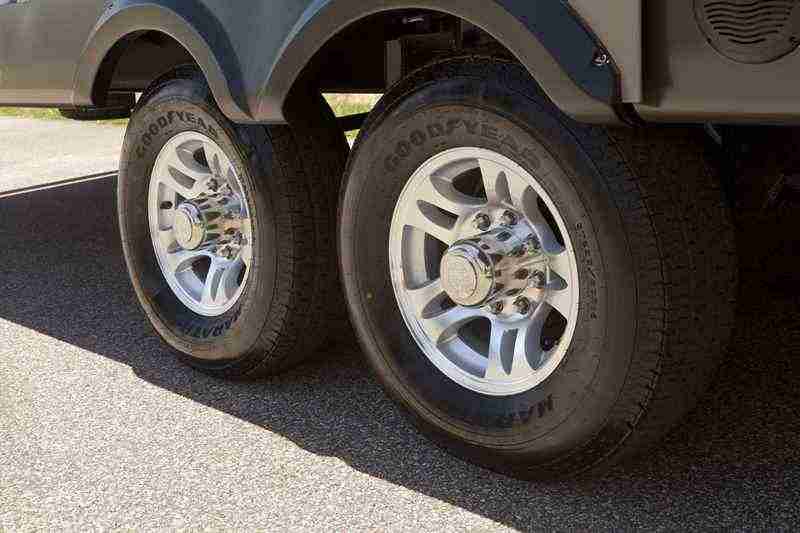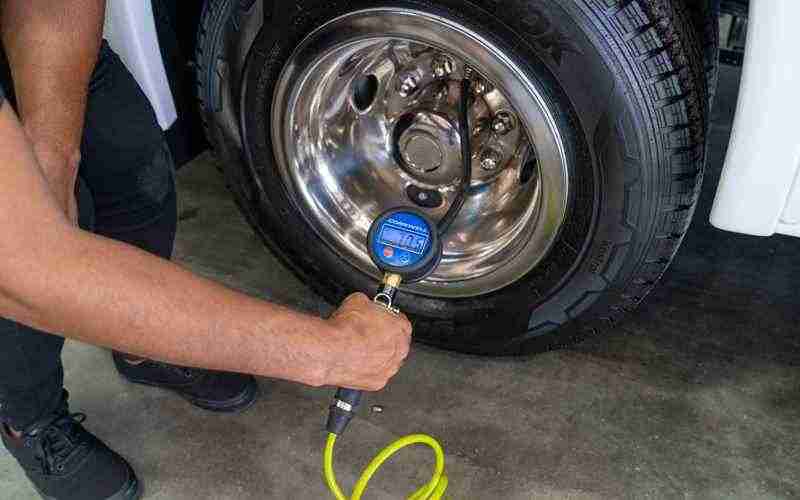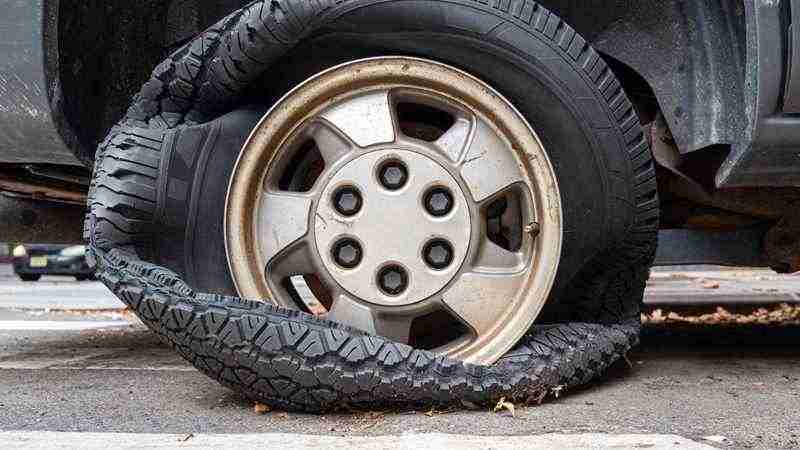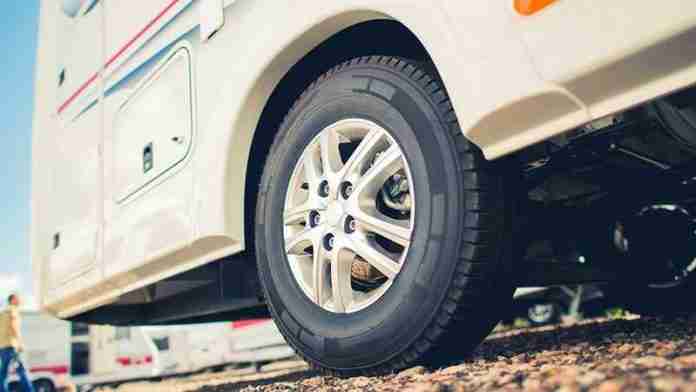Introduction to RV Trailer Tires and Wheels
Welcome to the fascinating world of tires and wheels for your motor home/recreation vehicle. As you guessed, tires and wheels are arguably the most important part of your RV. After all, they are what allow you to get from point A to point B.
tires and wheels are arguably the most important part of your RV.
However, some don’t truly understand all the work that these tires and wheels do to ensure that you reach your destination safely. Think about it, these four little round things at the bottom of your RV bear the weight of your RV, absorb shock from the road, provide traction, and help ensure that your travel is smooth and safe.
In this informative blog, we will take a deep dive into the world of tires and wheels designed for RVs. We’ll begin by exploring different types of RV tires and rims, such as radial or bias ply tires, as well as steel and aluminium wheels. Next, we’ll delve into the significance of load ratings, which is an often overlooked factor in the safety of your RV travels.

After this, we’ll provide practical tips for maintaining your tires and wheels. After all, nothing will stay as good as new ones and provide peak performance if you don’t take care of them. To wrap it all up, we will cover some common mistakes RV owners make, such as putting too much or too little air in your tire, as well as how to avoid making these mistakes.
So buckle up and enjoy the ride as we delve right into the wonderful world of RV tires and Wheels!
RV Wheel and Tire Selection
With every Tire and wheel having its own unique designs and features, the world of motorhome and trailer tires and wheels can often come off as a very confusing and stressful topic, but it doesn’t have to be. the first step is to understand the different RV wheel and tire selections available so you can feel confident that you are choosing the right tires and wheels
Types of RV Tires
Tires for RVs mainly come in Four main types and these RV tires sizes and types are made for specific motorhomes/recreation vehicles:
- Radial: Often viewed as the best option for travellers, these tires are characterised by cord plies arranged at 90 degrees to the direction of travel, providing a smoother ride, better fuel efficiency, and a longer lifespan. They’re ideal for those long-haul trips due to their excellent heat dissipation properties. the best part? These tires have an expected lifespan of about 40,000 miles, ensuring you won’t have to replace them as often as other tires. If you are interested in Radial tires, be warned that they can become quite expensive to purchase.
- bias ply: If you are looking for a less expensive option, bias try tires are a great option. Similar to the radial tires, they also include a belt running at a 30-45 degree angle. Because of this, Bias-try trailer tires are able to handle heavier loads. The significant downside to these tires is they have a shorter lifespan compared to Radial tires, with an expected lifespan of about 10,000 miles. Overall, both tires had significant advantages over each other. ‘
- Special Trailer Tires: Special Trailer tires, or ST tires, are made to handle and be under heavier types of trailers. These tires provide a smooth ride specifically for trailers that are being towed by another vehicle, making them great for travel trailers, fifth wheels, and pop-up tent trailers. Unfortunately, these tires are known for not having the best traction for tires on the market.
- Light truck Tires: Light truck tires, or LT tires, are a great option for motorhomes, more specifically, class A>B>+< and C motorhomes. The reason these are called “light truck” tires is due to them being designed for heavy loads from bigger trucks and other vehicles. keep in mind, although they are great for motorhomes as well, this was not the intended use for these tires. These heavy-duty tires have a ticker sidewall than ST tires, making them more durable and harder to bend.
Types of RV Wheels
When it comes to RV wheels, there are only two main types that you will find on the market:
Steel: The heavier of the two main wheel options, steel wheels are often the go-to choice of RVers. Why is this? steel is an extremely durable metal for RV wheels, which means they can often take many bumps along the way and the damage will be at a minimum.
However, due to the heavier weight, this can lead to a decrease in fuel efficiency and acceleration. Also, since they are made of a metal, steel rims are often more prone to rust over time.
Aluminium: Unlike steel wheels, aluminium wheels are best known for being a lightweight option for those looking for RV wheels. Not only are these wheels very durable as well, but damage to these wheels can be fixed with less maintenance and can improve your RV’s gas mileage compared to the heavy steel wheels.
The Significance of Load Ratings for RV Trailer Tires
Before you go out and purchase your new tires, one of the first questions you’re going to be asked about is the load rating. With that said, you are probably wondering what exactly load rating is. Simply put, a tire’s load rating is a numerical indication that specifies the maximum weight that each tire can safely support when fully inflated.
With motorhome or trailer tires, it’s not just about getting from one place to another, it’s about doing so safely. The tire load rating is a big factor in making sure you get where you need to go safely and problem-free.
With motorhome or trailer tires, it’s not just about getting from one place to another, it’s about doing so safely.
The load rating of your motorhome or trailer tires might sound like a complex number to get. Although this is true, manufacturers get you everything you need to find this out. In the end, the load rating is not just a random number that’s been placed on it. The load rating is calculated by tire manufacturers by running various tests. This number is often found on the tire’s sidewall and is usually accompanied by a speed rating.
Together, these two figures form the tire’s service description. For example, a tire will have a service description with a number, followed by a single letter. If your tire has a load rating of “105R”, that means that the tire can carry a maximum load of 925 lbs. at the speed indicated by the letter R (which is approximately 106 mph).
How to change Your Trailer Tires
Now that you have your new tires, it is time to change your existing tires. Now, it is easy to bring your RV into a shop every time and have them do the job, but why spend the money on a job you can do at home? To make this task easier, we put together a step-by-step guide to changing your RV tires.
Tools
Before you get started, it is important to make sure you have the right tools for the job in your tool box.
- RV Jacks
- RV Leveler
- Lug wrench
- new tires
Step-by-step guide to changing your RV Trailer Tires
- Find the right area to change the tire: this can be in your driveway or anywhere else that works. Just make sure the area you have chosen is flat and levelled, as RVs weigh a lot, and unleveled ground can cause a lot of problems right out of the gate.
- Lift up your RV using your RV jacks and leveller: the key for this step is to not lift your RV too high or too low. For reference, roughly 6 inches off the ground is a reasonable height for the job.
- Remove the lug nuts using your lug or tire wrench. Once all the lug nuts are removed, place them in your packs or in a bag, as these small pieces are very easy to lose if you aren’t careful.
- Replace the old tire: Now that the lug nuts are off, you are able to remove your old trailer tire and replace it with a new trailer tire. Before placing the new tire on, double-check the pressure of the tire to make sure it isn’t too high or too low. Once the new tire is on, place the lug nuts back on.
Just like that, you have replaced your RV tire! no need to spend money on mechanics for this job again.
if you would like to see how to do this task, check out this video on changing an RV tire:
Essential Tips for Maintaining Your RV Trailer Tires and Wheels
The longevity and performance of your tires and wheels largely depend on how well you maintain them. Not only can proper maintenance and care keep your tires and wheels lasting longer, but it also has the benefit of simultaneously keeping you safer on the road.
Keeping your tires and wheels well taken care of can lead to ideas of traction, control, and stability, which are the key factors that make a smooth driving experience.
Maintenance Practices for Your RV Trailer Tires and Wheels
With all that said, how can you keep your tires and wheels in the best shape? Here are a few of the best tips for the job.
- Tire Pressure Monitoring: Monitoring your tire pressure is something that some can do incorrectly in two different ways. you can underinflate your tires, which is the more common of these two issues. This can lead to overheating and even a tire blowout if you don’t fix it right away. On the other hand, you can also overinflate your tires, which can affect the handling of your RV. To fix this, consider purchasing a tire pressure monitoring system that can alert you when your tire pressure is too high or too low.
- Rotation: Regularly rotating your tires can help ensure even wear and extend their life. Although the number of times you should rotate your tire can vary based on the type of RV you have, the common rule is to rotate every 5,000- – 8,000 miles. T
- Cleaning: Yes, even your tires and wheels need a good clean every now and then. Luckily. this isn’t a difficult task and can be done in a few minutes. All you’ll need is some mild detergent and a soft brush to gently clean the tires and wheels. Avoid using harsh chemicals that can degrade the rubber and wheel finish.
- Visual Inspection: Regularly doing a visual inspection of your tires and wheels will help you pick up on any damages that might have occurred on your travels. If you do happen to notice there is damage, it is always best to have a professional have a look and provide some advice on how to fix the damage.
- Tire Covers: Its a good idea to cover your tires when the vehicle is stationary for long periods or is being stored. This prevents premature deterioration of the tread and sidewalls from exposure to the sun or moisture.
What to do if your RV Trailer Tires have too much/not enough air
When it comes to the amount of air in your RV’s ires, you don’t want to put too much or too little. Both these scenarios can lead to some expensive repairs if the tire blows. Avoiding this is a simple task. Your tires have a set pressure that they should be at in order to work properly, you can find this number typically in your RV’s manual.

If you notice the tire pressure is too low, slowly add air to your tires with an air pump that can be found at most gas stations. If there air is too high, slowly release some of the extra air from the tires. Make sure to check the tire pressure a few times during this process, as you won’t run into the problem of having added too much air or letting out too much.
Conclusion: Emphasising Safety and Performance with RV Trailer Tires and Wheels

In the journey of exploring RV tires and wheels, we have delved into myriad aspects that determine their performance and safety. First, we dove into the significance of RV tires and wheels and the different types available in the market like Goodyear RV tires.
That was followed by covering the significance of load ratings and what load ratings are. To end it all off, we provided some helpful tips for cleaning and maintaining your tires and wheels to keep them performing good as new ones.
With all this information, you now know the true importance of tires and wheels on an RV and the significant roles they play in your travels. Of course, tires and wheels get you from one place to another, but they play a crucial role in making sure this happens effectively and safely. So, let’s make safety our priority and performance our goal.
Here’s to many more miles of safe and enjoyable RVing!

















